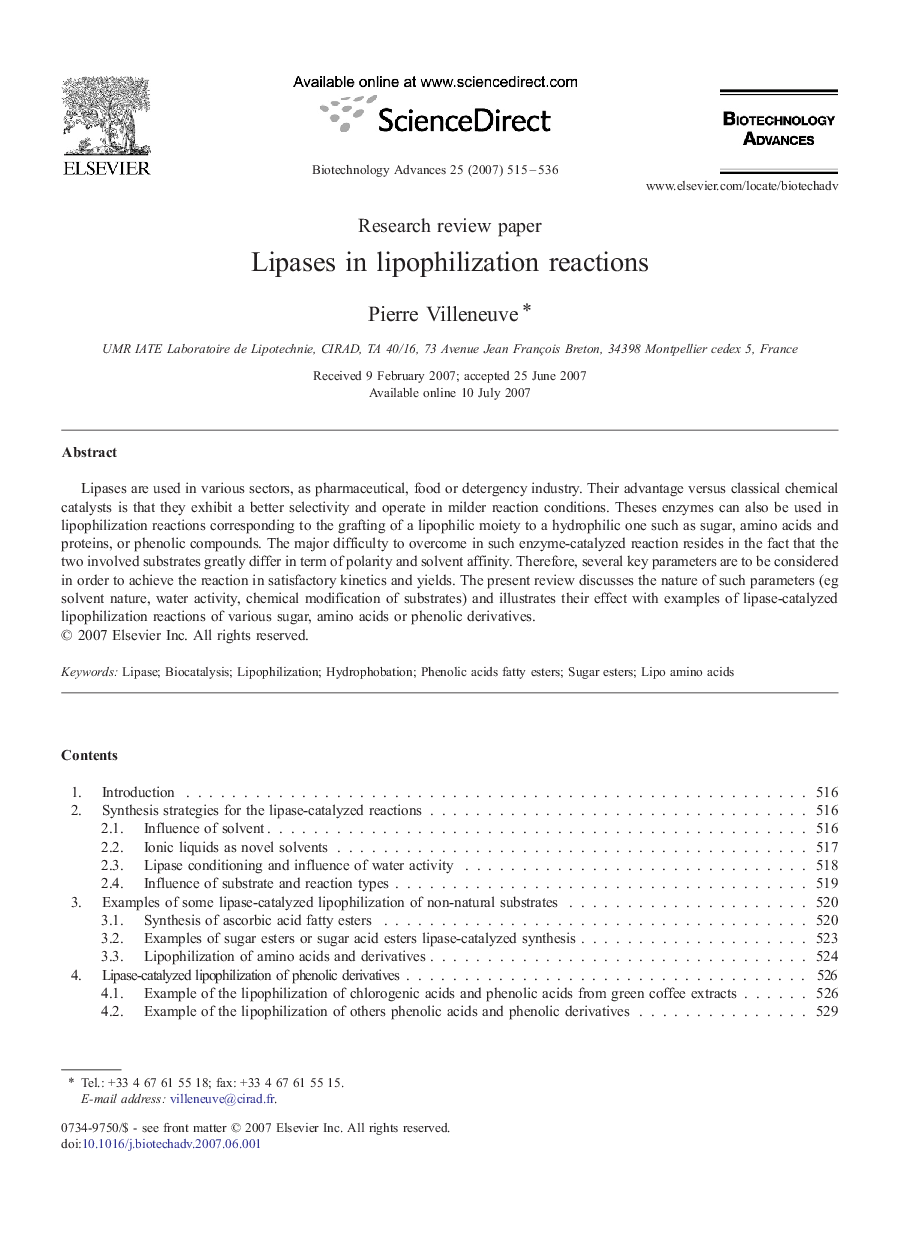| Article ID | Journal | Published Year | Pages | File Type |
|---|---|---|---|---|
| 14556 | Biotechnology Advances | 2007 | 22 Pages |
Lipases are used in various sectors, as pharmaceutical, food or detergency industry. Their advantage versus classical chemical catalysts is that they exhibit a better selectivity and operate in milder reaction conditions. Theses enzymes can also be used in lipophilization reactions corresponding to the grafting of a lipophilic moiety to a hydrophilic one such as sugar, amino acids and proteins, or phenolic compounds. The major difficulty to overcome in such enzyme-catalyzed reaction resides in the fact that the two involved substrates greatly differ in term of polarity and solvent affinity. Therefore, several key parameters are to be considered in order to achieve the reaction in satisfactory kinetics and yields. The present review discusses the nature of such parameters (eg solvent nature, water activity, chemical modification of substrates) and illustrates their effect with examples of lipase-catalyzed lipophilization reactions of various sugar, amino acids or phenolic derivatives.
